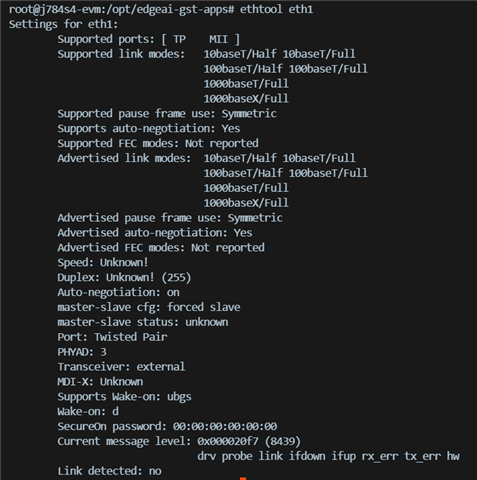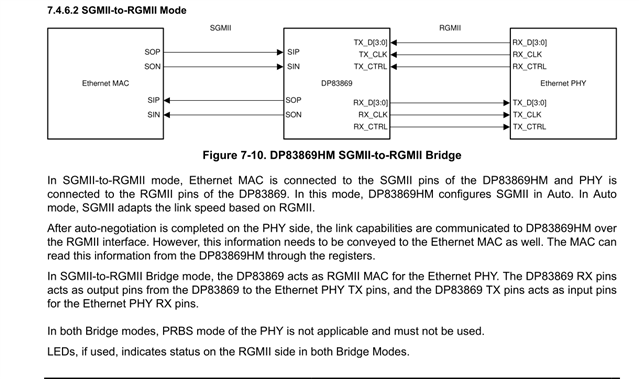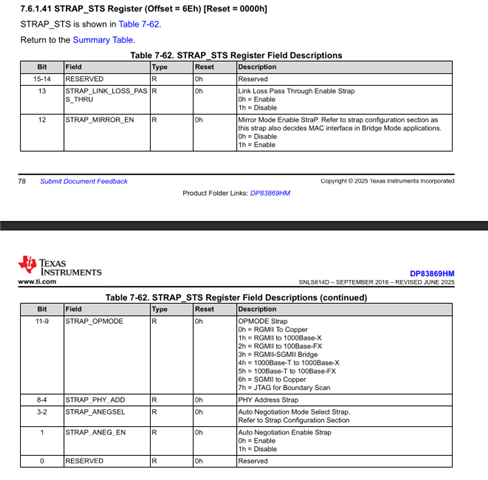Other Parts Discussed in Thread: DP83869, DP83869HM
Tool/software:
Hi,
I'm currently using SDK 09.02.00.05
My dts file looks like this
&serdes_wiz2 {
status = "okay";
};
&serdes2 {
status = "okay";
#address-cells = <1>;
#size-cells = <0>;
serdes2_sgmii_link: phy@0 {
reg = <0>; // lane index
cdns,num-lanes = <1>;
cdns,phy-type = <PHY_TYPE_SGMII>;
#phy-cells = <0>;
resets = <&serdes_wiz2 1>;
};
};
&main_cpsw0 {
status = "okay";
};
&main_cpsw0_mdio {
status = "okay";
pinctrl-names = "default";
pinctrl-0 = <&wtx_main_cpsw9x1_pins_default>;
pinctrl-1 = <&wtx_main_pmx_gpio_vddshv20_pins_default>;
main_phy3: ethernet-phy@3 {
reg = <3>;// DP83869 address
ti,op-mode = <DP83869_RGMII_SGMII_BRIDGE>;
};
};
&main_cpsw0_port5 {
status = "okay";
phy-mode = "sgmii";
phy-handle = <&main_phy3>;
phys = <&cpsw0_phy_gmii_sel 5>, <&serdes2_sgmii_link>;
phy-names = "mac", "serdes";
};
If I'm using SGMII mode on J784S4, is it mandatory to specify the phys = <&cpsw0_phy_gmii_sel X> and phy-names = "mac" in the DT node?
Or will it still work without that, as long as the phy-mode = "sgmii" is set?
Thanks in advance
Regards,
B. Apuroop Kumar






